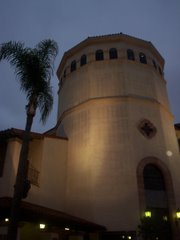I had downloaded lobbying expenditures from the Secretary of State’s Web site and found that over a little more than six and half years the County of Orange had spent $5.1 million on lobbying – more than the Irvine Co., Pacific Life Insurance and the Walt Disney Co. combined.
According to the state’s official numbers, Orange County ranked 32nd out of 4,321 lobbying interests, just seven spots behind British Petroleum ($5.9 million) and 10 behind Verizon ($6 million).
Wow. Doesn't that sound crazy? Well, what if I told you that Orange County ACTUALLY DIDN'T spend $5.1 million on lobbying? Follow me after the flip for more on this story of disclosure gone wild...
(Cross-posted at Calitics)
Hold on a moment. So Orange County didn't spend $5.1 million on lobbying Sacramento? Well, it depends on how one counts the money.
Digging much deeper, I found the state’s reporting standards for government agencies differ from other lobbying interests. Governments, unlike other groups, are required to report membership dues to organizations that spend more than $15,000 or 10 percent of their annual expenditures on lobbying. So while a county has to count its membership fee to a politically active chamber of commerce, a business doesn’t have to.
That might not sound like a big deal, but $3.5 million, or nearly 70 percent, of Orange County’s reported lobbying expenses appear to be membership fees or other organizational costs. Over the six full years I examined, Orange County spent an average of $560,000 annually on fees to a total of more than 150 organizations. Only about $1.5 million went to direct lobbying.
$3.5 MILLION?! Is there really a $3.5 million discrepancy between what the county might have actually spent on lobbying and what the county has to report to the state on lobbying expenses? Is this for real?
Moreover, some organizations charge different dues depending on the size of the member. In 2005 and 2006, for example, Orange County paid a total of $333,051 to the California State Association of Counties while Contra Costa County, a third of Orange County’s size, paid the organization $110,496.
Then there’s over-reporting. Governments, not surprisingly, might not know whether an organization meets the $15,000 or 10 percent lobbying threshold. So in the interest of full disclosure, I’m told some agencies report dues to all organizations – regardless of whether they qualify.
All of which makes the state’s publicly available numbers grossly misleading.
You can compare expenses for businesses and other groups, but you can’t accurately compare them to governments or even compare one government to another. You could, I suppose, read the fine print and subtract membership dues, but that also could eliminate costs for indirect lobbying.
So then, what good are these numbers? What good are these numbers if they can't give us an accurate representation of how much our local governments are actually spending on lobbying Sacramento? What good are these numbers if we can't compare how much my local governments is spending to how much your local government is spending?
Now I guess disclosure is good. It's good for us to know how much money our local government is spending on lobbying expenses. But then again, what good are these numbers if they don't give us an accurate portrayal of what's actually happening?
Maybe Shirley Grindle is right...
“In my book, ‘disclosure’ … is just another word for confusing the public. Just give ‘em a bunch of numbers that don’t make any sense.”
Is Shirley Grindle right? Is disclosure just meant to confuse us? Is there a better way to disclose? What do you think?









No comments:
Post a Comment